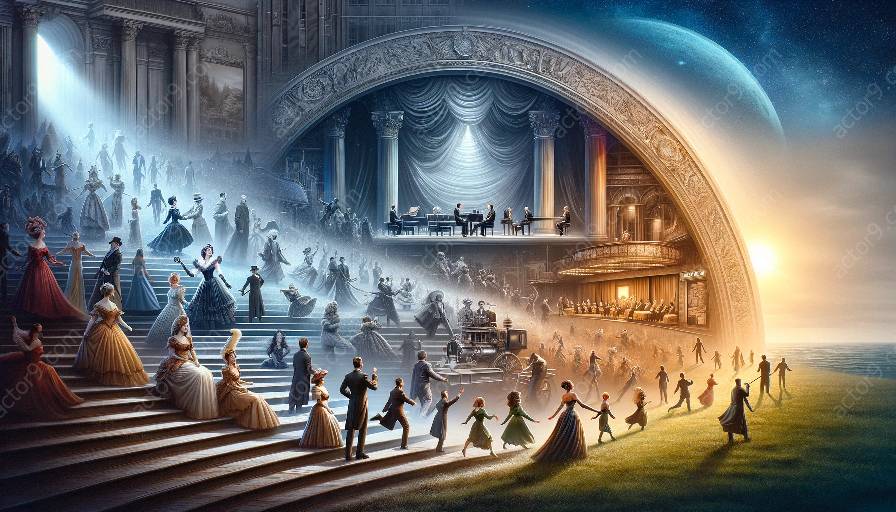The influence of cultural diversity on the history of musical theatre has been profound and far-reaching, shaping the development of this art form in countless ways.
The history of musical theatre is a rich tapestry woven from a diverse range of cultural influences, each contributing unique elements to the evolution and growth of this vibrant and innovative art form. From its origins in ancient Greek drama and religious rituals to the spectacular Broadway productions of today, musical theatre has been deeply intertwined with cultural diversity, reflecting societal changes and embracing a wide array of traditions, languages, and customs.
Historical Foundations of Musical Theatre
The roots of musical theatre can be traced back to ancient civilizations such as the Greeks and Romans. The integration of music, dance, and drama in religious ceremonies and communal celebrations laid the groundwork for the development of musical storytelling. As civilizations expanded and intermingled, cultural exchange became a driving force behind the evolution of theatrical performances, leading to the blending of diverse musical and dramatic traditions.
Cultural Fusion and Artistic Innovation
Throughout history, musical theatre has continually embraced cultural fusion and artistic innovation. The cross-pollination of different musical styles, dance forms, and storytelling techniques has been instrumental in shaping the diversity of musical theatre. From the European operettas of the 19th century to the groundbreaking works of African-American composers and lyricists, such as Scott Joplin and Eubie Blake, cultural diversity has infused musical theatre with new and dynamic expressions.
Global Impact and Representation
Cultural diversity has played a pivotal role in expanding the global impact and representation of musical theatre. The emergence of iconic productions like 'The Lion King,' which draws on African motifs and music, and 'Miss Saigon,' which delves into the complexities of Vietnamese culture, underscores the profound influence of diverse cultural narratives on the stage. Additionally, the incorporation of traditional music and dance from various regions, such as flamenco in 'Carmen' and Bollywood in 'Bombay Dreams,' has broadened the spectrum of musical theatre, captivating audiences worldwide.
The Evolution of Themes and Storytelling
Cultural diversity has driven the evolution of themes and storytelling in musical theatre, enabling the exploration of wide-ranging narratives and experiences. Productions like 'Hamilton' and 'In the Heights' have redefined the musical theatre landscape by centering on the stories of marginalized communities and celebrating the richness of multiculturalism. By intertwining diverse musical genres and cultural contexts, these works have brought a fresh perspective to the stage, highlighting the transformative power of cultural diversity.
Resonance and Relevance in Modern Society
In contemporary musical theatre, the influence of cultural diversity continues to resonate and hold immense relevance in modern society. As the demographic makeup of audiences evolves and societal conversations about representation and inclusion gain prominence, musical theatre serves as a platform for amplifying diverse voices and narratives. The fusion of global influences, contemporary issues, and traditional storytelling techniques creates an engaging and resonant tapestry that mirrors the complex realities of our world.
Conclusion
The influence of cultural diversity on the history of musical theatre is an integral and enduring aspect of this art form. From its early origins to its current innovative productions, musical theatre has thrived on the interplay of cultural influences, ushering in new forms of expression and broadening its impact across the globe. As the history of musical theatre continues to unfold, cultural diversity will undoubtedly remain a driving force, shaping and enriching the tapestry of this captivating and dynamic art form.




































